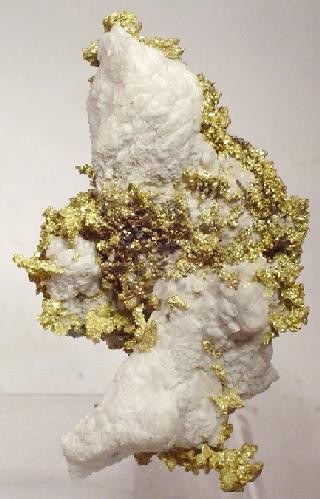 |
| Nova Scotia gold in quartz Photo by Rob Lavinsky |
A gold province is contained in the Meguma Terrane of Nova Scotia Nova Scotia Canada Mt. Uniacke Nova Scotia
In the gold producing areas the Meguma rocks display a variable deformation ranging from into upright gently to moderately double plunging folds having multiple cleavages. Gold in the Meguma is divided into three major groups: 1 hi-grade that averages up to 15 g per ton; 2 low-grade averaging from 0.5 to 4 g per ton and 3g per ton gold that is hosted in meta-sandstone. A combination of either two can also occur.
Most of the historical production of 47 million g has come from hi-grade deposits found less then 200 m from the surface. The majority of the gold has been produced from a variety of veins ranging from bedding concordant, to fissure and stockwork veins. The veins were emplaced by the migration of metamorphic fluids during the late Acadian Orogeny of the Devonian. The Meguma is a good example of
Most of the gold in the Meguma is found in two formations: the Halifax
The erosion products of the Meguma are found in the coal measures of Nova Scotia Gulf of St. Lawrence to Glace Bay on Cape Breton Island . Conglomerate in this area deserves a close look.
See also: Meguma Gold of Nova Scotia

Now I have to move to N.S. too, John! Great article!
ReplyDeleteWait until you see the article about New Brunswick!
ReplyDeleteBullion Exchanges is a reputable Precious Metals Seller located in the heart of New York City's Diamond District.
ReplyDeleteThey have a large selection of items like, metals that range from the gold & silver to platinum and palladium.
Bullion Exchanges are offering an enormous selection of products appealing to 1st time shoppers and for experienced investors.